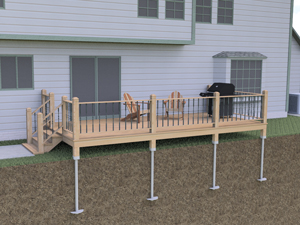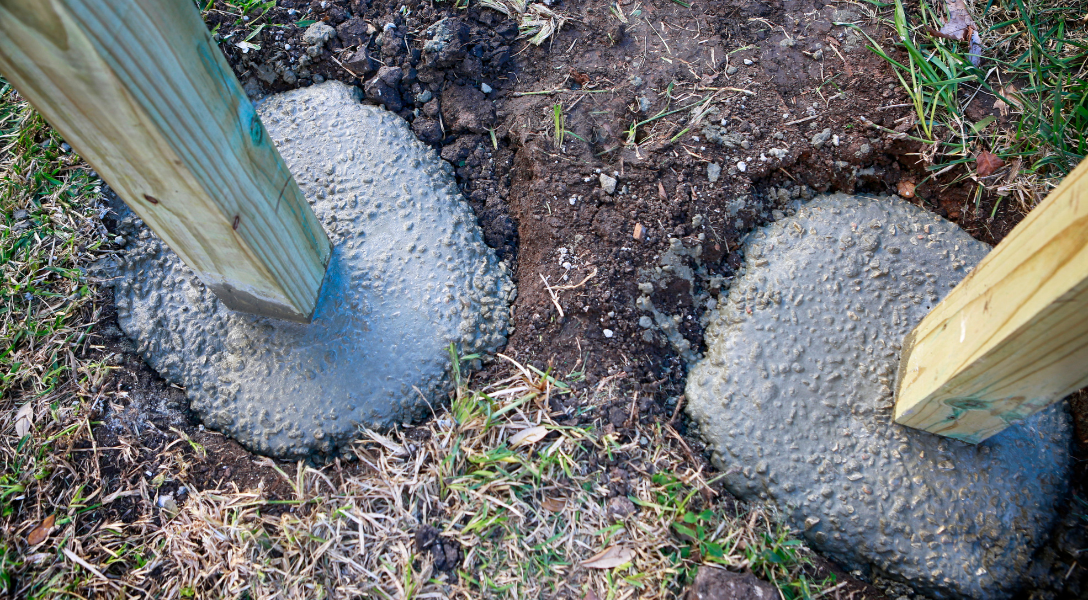Protect Structures, Enduring Impressions: Understanding the Art of Deck Footings Installation
Protect Structures, Enduring Impressions: Understanding the Art of Deck Footings Installation
Blog Article
Expert Tips for Setting Up Deck Footings to Assistance Your Outdoor Space
When it comes to building a deck, one of the most critical aspects to think about is the installment of proper footings. These grounds are the structure upon which your outdoor space will rest, offering security and support for years to come. What precisely does it take to mount deck footings appropriately?
Value of Appropriate Deck Footings
Correct deck footings are essential for ensuring the security and long life of your outside room. When constructing a deck, it is important to take notice of the structure on which it will rest. Deck footings offer the essential assistance for the whole framework and help distribute the weight uniformly - Deck Footings. Without solid and correctly installed grounds, your deck might end up being unpredictable, resulting in safety threats and costly fixings.

Along with security, correct deck grounds additionally add to the long life of your outdoor space (Deck Footings). Grounds that are made and constructed to withstand the components and soil conditions in your location will aid prevent the deck from changing or settling gradually. By making certain the footings are properly sized and installed, you can lessen the risk of damage to the deck framework, extending its lifespan and lowering the demand for costly repair services or substitutes

Selecting the Right Sort Of Footings
When picking the ideal kind of footings for your deck, it is vital to take into consideration variables such as dirt conditions, neighborhood building ordinance, and the general layout of your exterior area. The kind of footing you pick will certainly play a vital duty in ensuring the security and durability of your deck.
One common kind of footing is the concrete ground. Concrete grounds are appropriate for many dirt conditions and provide exceptional support for decks. They are commonly mounted below the frost line to stop moving and settling due to cold and thawing cycles. One more alternative is helical piers, which are perfect for locations with unstable dirt or high water tables. These piers are screwed into the ground and provide strong support for the deck.
In many cases, you may need to utilize specific grounds, such as stack grounds or deep structures, if you are constructing a multi-level or big deck. These footings are designed to disperse the weight of the deck over a larger location, guaranteeing stability and protecting against resolving or sinking.
Prior to picking a kind of footing, it is vital to speak with local building codes and laws to ensure conformity. Additionally, think about the layout and intended use of your outdoor area. Elements such as the size, form, and load-bearing requirements of your deck will affect the kind of footing that is most suitable.
Preparing the Ground for Footing Setup
To appropriately prepare the ground for footing installation, it is essential to examine the soil problems and take necessary steps to ensure stability and longevity of the deck. The very first action is to excavate the location where the grounds will be set up.
Once the location has been excavated, the following action is to compact the dirt. This can be done using a plate compactor or by using a hand meddle. Compacting the soil aids to get rid of any type of gaps or air pockets, which can lead to settling and instability in time.
After condensing the soil, it is necessary to lay a layer of crushed rock or smashed rock at the end of the excavation. This will certainly supply drainage and help to avoid water from merging around the grounds, which can cause disintegration and instability.
Step-by-Step Overview to Installing Deck Footings
After properly preparing the ground for footing installation, the following action is to start the process of mounting deck footings. This step-by-step overview will provide you with a clear understanding of how to set up deck footings for your outdoor room.
Establish the location: Start by marking the positions of the deck footings making use of risks and string. Ensure that the areas straighten with the style and layout of your deck.
Dig the holes: Utilize an article opening miner or an auger to dig the openings for the grounds. The deepness and size of the openings must remain in conformity with regional building ordinance and the certain needs of your deck layout.
Level the holes: Make use of a degree to make certain that the openings are dug to the appropriate depth and are degree with each various other. (Deck Footings)
Add gravel: Area a layer of crushed rock at the bottom of each hole to boost drainage and protect against the wood from decomposing.
Place the footings: Put the footings right into the holes, making certain they are level and plumb. Utilize a level and a determining tape to ensure accuracy.
Secure the footings: Pour concrete into the openings around the grounds, filling them to the top. Make use of a post degree to make sure the grounds remain degree as the concrete sets.
Allow time for healing: Allow the concrete treatment according to the manufacturer's guidelines before waging the deck building.
Usual Mistakes to Avoid Throughout Footing Setup
One essential aspect to think about throughout the installment of deck grounds is staying clear of usual errors that can compromise my review here the stability and long life of your outside space. While deck footings might appear like a straightforward and easy part of the construction procedure, ignoring specific aspects can cause expensive fixings and prospective safety and security risks down the line.

Furthermore, ignoring to install proper water drainage procedures can create water to build up around the footings, bring about rot, decay, and the ultimate weakening of the deck's foundation. Additionally, utilizing the wrong kind of footing product or falling short to effectively secure the footings can compromise their architectural honesty.
To prevent these mistakes, it is important to speak with an expert or comply with market standards to make certain appropriate ground setup. By doing so, you can make certain the stability and durability of your outdoor space, supplying a secure and satisfying atmosphere for many years ahead.
Verdict
Finally, installing proper deck footings is important for the stability and long life of your outside space. By choosing the ideal kind of grounds more helpful hints and adequately preparing the ground, you can make sure a strong structure for your deck. Following a detailed overview and avoiding typical blunders during footing installation will further enhance the durability and safety of your deck.
Proper deck footings are vital for guaranteeing the security and long life of your exterior room. The grounds offer as a link between the ground and the deck, permitting the weight of the deck and its passengers to be distributed equally right into the soil.One common type of ground is the concrete ground. Place the grounds: Position the grounds right into the holes, making sure they are level and plumb. Safeguard the grounds: Pour concrete right into the useful reference holes around the footings, filling them to the top.
Report this page